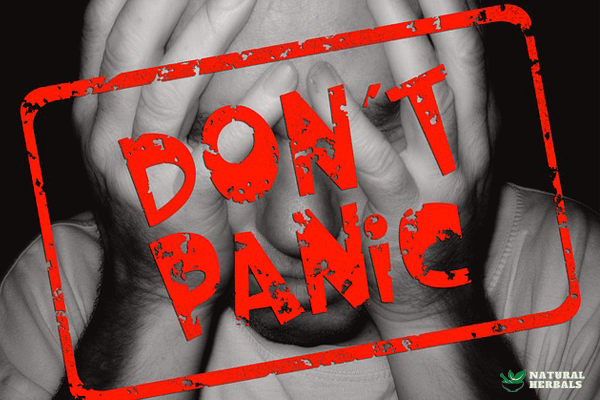
There are several types of anxiety disorders. Anxiety is a normal response to stress and can be beneficial in some situations. It can alert you to dangers and help you prepare and increase your alertness.
Anxiety disorders differ from normal feelings of nervousness or anxiety and consist of excessive fear. In anxiety disorders, the anxiety persists (often six months or longer) and is disproportionate. Anxiety disorders are the most common mental illness and affect nearly 30 percent of adults at some point in their lives.
However, anxiety disorders are highly treatable and a number of effective treatments are available. Treatment helps most people lead normal and productive lives.
What are anxiety disorders?
A distinction is often made between fear and anxiety. Fear is the emotional response to an actual or perceived imminent threat. Fear refers to the anticipation of a future threat. There is an overlap between these two states. Fear is an emotional response to a future threat and is associated with a fight or flight response.
Anxiety is an emotional response to a future threat and is associated with a fight or flight response. Anxiety disorders can cause people to try to avoid situations that trigger or exacerbate their symptoms. Work performance, schoolwork and personal relationships can be affected.
In general, if a person is diagnosed with an anxiety disorder, the anxiety:
- Disproportionate or inappropriate for the age
- Hinders you from functioning normally and carrying out your daily tasks
Symptoms
Everyone is nervous or anxious from time to time, such as when you have to say something in public, or when you are having financial difficulties. However, some people are so often anxious or the anxiety is so powerful that it begins to control their lives. But how do you know if your everyday anxiety has crossed the line into a disorder?
It's not easy to tell. Anxiety comes in many different forms, such as panic attacks, phobias and social anxiety, and the distinction between an official diagnosis and ‘normal' anxiety is not always clear cut. If you regularly suffer from any of the following symptoms, it would be wise to discuss this with your GP.
Excessive worrying and fretting
The hallmark of generalized-anxiety disorder-the broadest form of anxiety-is excessive fear and anxiety about a number of events or activities. But what is \”excessive\”? In the case of generalized-anxiety disorder, it means that you have persistent anxious or worried thoughts on most days of the week, for six months.
Also, the anxiety must be so severe that it disrupts daily life and is accompanied by noticeable symptoms, such as fatigue. The distinction between an anxiety disorder and just normal anxiety is whether your emotions cause a great deal of distress and dysfunction in various areas of life.
Sleeping problems
Trouble falling asleep, or sleeping through, is linked to a wide range of health problems, both physical and psychological. And, of course, it's not unusual to turn and toss in bed when you have to give an important lecture or have a job interview the next day.
But if you find that you have chronic sleep problems and can't catch sleep because you're fretting about specific problems (like money or interactions with other people) or nothing in particular, this could be a sign of an anxiety disorder. According to some estimates, half of all people immediately diagnosed with generalized-anxiety disorder suffer from sleep problems.
Irrational fears
Some fears are not generalized at all; on the contrary, sometimes fears are linked to a specific situation or thing, such as flying, animals or crowds. If the fear is overwhelming, disruptive and disproportionate in relation to the actual risk, it is a telling sign of a phobia, a type of anxiety disorder. Although phobias can be crippling, they are not always obvious.
In fact, they may not surface until you face a specific situation and discover that you are unable to overcome your fear. A person who is afraid of snakes may go through life for years without having a problem until you find yourself in a situation where you are confronted with a snake, such as when visiting an reptile museum or trekking through the wilds of America.
Muscle Tension
Nearly constant muscle tension is a symptom of an anxiety disorder. This symptom can be so persistent and pervasive that people who have lived with it for a long time don't notice it after a while. Regular exercise can help control muscle tension, but the tension can flare up if an injury or other unforeseen event disrupts exercise habits.
A person can turn into a wreck because they can no longer manage their fears by exercising and become incredibly restless and irritable.
Chronic digestive problems
Anxiety may begin in the mind but often manifests itself in the body through physical symptoms, such as chronic digestive problems with abdominal pain, cramps, bloating, gas, flatulence, constipation, and/or diarrhea. The gut is very sensitive to psychological stress and conversely, the physical and social discomfort of chronic digestive problems can make someone more anxious.
Stage fright
Most people get at least a few butterflies in their stomachs before having to address a group of people or otherwise be in the spotlight. But if the anxiety is so strong that even coaching or exercise doesn't help, or if you spend a lot of time fretting about social situations, you may have a form of social phobia.
People with social anxiety tend to worry terribly, many days or weeks prior to a particular event or situation. And if they manage to go through with it, they tend to feel deeply uncomfortable and think about it for a long time, wondering how they came across to others.
Self-Awareness (The bad kind)
With social anxiety, you fear that everyone will think negatively of you, such as when you go to a party, make a speech, eat in company. In most cases, the anxiety is triggered by everyday situations, such as having one-on-one conversations at a party, or eating and drinking with others.
In these situations, people with social phobia feel like all eyes are on them and experience flushing, trembling, nausea, profuse sweating or difficulty speaking. These symptoms can be so disruptive that they make it difficult to meet new people, maintain relationships and make progress at work or school.
Panic attacks
Panic attacks can be terrifying: imagine a sudden, gripping feeling of fear and helplessness that can last for several minutes and which is accompanied by frightening physical symptoms such as difficulty breathing, a quickened heartbeat, tingling or numb hands or fingers, sweating, weakness or dizziness, chest pain, abdominal pain, and hot or cold sensations.
Not everyone who has a panic attack has an anxiety disorder, but people who experience them repeatedly may be diagnosed with panic disorder. People with panic disorder live in fear about when and where their next attack will occur, and they tend to avoid places where attacks have occurred in the past.
Flashbacks and re-experiences
Reliving a distressing or traumatic event, such as a violent encounter, a car accident or the sudden death of a loved one, is a feature of post-traumatic stress disorder (PTSD), which shares some characteristics with anxiety disorders. But flashbacks can also occur with other types of anxiety.
Some people with social anxiety may have PTSD-like flashbacks of experiences that may not seem overtly traumatic, such as being publicly mocked. These people may even avoid memories of the experience, another symptom reminiscent of PTSD.
Perfectionism
The picky and obsessive mindset known as perfectionism goes hand in hand with anxiety disorders. If you find yourself constantly judging yourself or worrying a lot about making future mistakes or constantly falling completely short of your ideal image, you probably have an anxiety disorder.
Perfectionism is especially common in obsessive-compulsive disorder (OCS), which, like PTSD, has long been considered an anxiety disorder. OCD can happen subtly, as in the case of someone who can't leave the house for three hours because their makeup has to be absolutely just right and they have to start over and over again.
Compulsive behavior
To be diagnosed with obsessive-compulsive disorder, a person's obsessiveness and intrusive thoughts must be accompanied by compulsive behaviors, whether mental (telling yourself over and over again that it's okay) or physical (constantly washing hands, straightening objects, cleaning everything all the time, etc.).
Obsessive thinking and compulsive behavior become full-blown disorders when the need to complete the behavior (rituals) begins to control your life.
Self-Doubt
Persistent self-doubt is a common feature of anxiety disorders, including generalized-anxiety disorder and OCD. In some cases, the doubt may revolve around a question central to one's identity (“am I really my parents' child?”) or one's relationship (\”does my husband love me?\”). In anxiety disorder, these “doubt attacks” are especially common when a question is unanswerable. They can't handle uncertainty, so the question becomes an obsession.
Types of anxiety disorders
There are several types of anxiety disorders, including generalized-anxiety disorder, panic disorder, specific phobias, agoraphobia, social phobia, and separation anxiety (fear of abandonment).
Generalized-Anxiety Disorder
Generalized-anxiety disorder, also known as peaking disorder, involves excessive fear and worry about daily things that affect multiple areas of life and this interferes with daily activities. This constant worry and tension may be accompanied by physical symptoms, such as restlessness, tenseness, getting tired easily, difficulty concentrating, increased muscle tension, or sleep problems.
Often concerns are focused on everyday things like work, family, social relationships or small things like chores, car repairs or appointments.
Panic attacks
The core symptom of panic disorder is recurrent panic attacks at unexpected times. Panic attacks are sudden waves of intense anxiety. During an attack, several of these symptoms occur in combination:
- Palpitations, pounding heart, or rapid heartbeat
- Sweating
- Trembling or shaking
- Shortness of breath or feeling like you're choking
- Chest pain
- Dizziness, lightheadedness, or feeling of weakness
- Numbness or tingling
- Chills or hot flashes
- Nausea or abdominal pain
- Fear of losing control
- Fear of dying
Phobias
A specific phobia is excessive and persistent fear of a specific object, situation or activity that is generally not harmful or dangerous. People realize that their fear is excessive, but they cannot overcome it.
These fears cause such distress that some people go to great lengths to avoid what they fear. Examples are fear of flying or fear of spiders.
Agoraphobia or fear of public places
Agoraphobia is excessive fear of leaving a safe and familiar environment. It is the fear of being in situations where escape may be difficult or embarrassing, or help may not be available in the case of panic symptoms. The fear is disproportionate to the actual situation and generally lasts six months or longer and causes problems in daily functioning.
A person with agoraphobia experiences this fear in two or more of the following situations:using public transportation, being in open spaces, being in enclosed places standing in line or being in a crowd, being home alone. You actively avoid the situation or need a companion to do certain activities.
Untreated agoraphobia can become so severe that a person is unable to leave the house. A person can only be diagnosed with agoraphobia if the anxiety is intense or if it significantly interferes with normal daily activities and there is suffering.
A person with a social phobia has a significant sense of fear of social interactions in which they might be shamed, humiliated, rejected, or in which they might be looked down upon. People with this condition will try to avoid the situation or face it with great fear.
Common examples include extreme fear of public speaking, meeting new people or eating/drinking in public. The anxiety causes problems with daily functioning and lasts at least six months.
Separation anxiety
A person with separation anxiety is extremely anxious or worried about being separated from attachment persons, i.e., the people with whom they feel connected. The feeling goes beyond what is normal for the person's age, the anxiety persists (at least four weeks in children and six months in adults) and causes problems with everyday functioning.
A person with separation anxiety disorder may constantly worry about losing the person closest to him or her and he may show persistent reluctance or refusal, because of separation anxiety, to go outside, away from home, to school, to work or anywhere else. He may also have nightmares about this separation anxiety. Both children and adults can suffer from separation anxiety.
Causes
As is the case with many mental illnesses, the cause of an anxiety disorder likely results from a complex interaction of biological and environmental factors, including:differences in brain chemistry and functiongenetic influences differences in the way threats are perceived development and personality.
Risc factors
The causes of anxiety disorders are currently unknown, but likely involve a combination of factors, including genetic, environmental, psychological and developmental. Anxiety disorders can run in families, suggesting that a combination of genes and environmental stress may cause the disorders. Also, more women than men have anxiety disorders.
Research and Diagnosis
To diagnose an anxiety disorder, a physician or a psychiatrist may:
- Perform a physical examination to look for signs that the anxiety may be linked to medications or an underlying medical condition
- Have blood or urine tests or other tests done if a medical condition is suspected
- Ask detailed questions about your symptoms and medical history
- Use psychological questionnaires and tests to make a diagnosis
- Use the criteria listed in the Diagnostic and Statistical Manual of Mental Disorders (DSM-5), published by the American Psychiatric Association
Treatment of anxiety disorders
Anxiety disorders are generally treated with psychotherapy, medication or both.
Psychotherapy and medication
Although each anxiety disorder has unique characteristics, most respond well to two types of treatment: psychotherapy or “talk therapy” and medication. These treatments can be given alone or in combination.
Cognitive behavioral therapy (CBT), a combination of two forms of psychotherapy: cognitive therapy and behavioral therapy, can help a person learn a different way of thinking, reacting and behaving in order to feel less anxious.
Medications do not cure anxiety disorders, but they can provide significant relief from symptoms. The most commonly used medications are anxiety medications (generally these are only prescribed for a short period of time) and antidepressants. Beta-blockers, used for heart disease, are sometimes used to control physical symptoms of anxiety.
There are a number of measures you can take to manage symptoms of anxiety disorders and make treatment more effective. Stress management techniques and meditation and prayer can be helpful.
Support groups (in person or online) can provide an opportunity to share experiences and coping strategies. Avoid caffeine, which can exacerbate symptoms, and check with your doctor about any medications.
Prognosis
People who have recovered from an anxiety disorder have a high risk of relapse. Research shows that 24% of patients have a relapse of the original anxiety disorder within 4 years, and this rate increases to 55% if not only a return of the original anxiety disorder is counted, but also the development of other anxiety disorders or a depressive disorder.
The literature shows that tapering off antidepressants can be an eliciting factor, but you can also have a relapse without an identifiable cause. Presumably, anxiety remains even when the disorder is in remission. Therefore, it is wise to be alert to the return of symptoms when you have recovered from an anxiety disorder so that timely intervention can be made if the symptoms reappear.
Influence of Herbs
Valerian
Valerian directly affects the brain and may help alleviate some symptoms of anxiety.
Passiflora
Passiflora is another herb that has a calming effect on the nervous system. Read more: nih.gov
Herbal Teas That Have a Calming Effect On The Nervous System
On this page you can find a number of herbal teas that have a calming effect on the nervous system. Always inform your medical professional before you start using herbs. Some herbs may interact with medication.

I am an official member of International Association of Therapists and research natural healing methods and herbs. The posts are my findings.



